How to Grow Echinacea Coneflowers
I really hope you’re prepared to fall in love this low-maintenance perennial! Echinacea aka Coneflower is one of my absolute favorite flowers to grow in the garden.
It’s among my tried-and-true plants and one I’d recommend to gardening beginners in a second – they’re that easy to care for.
Coneflowers thrive in zones 3-9 and you can find them in beautiful shades of purple, pink, and yellow. They’re actually one of the few flowers I can count during our hot Zone 9b Summers!
I love Echinacea for its petals that point downward and their large yellow-brown centers. They’re truly a sight to see in the yard, especially when grown in clumps.
They’ll bloom throughout the summer and into early fall and they’ll come back year after year.
What makes this flower a true garden gem is its low-maintenance nature. Coneflowers really don’t need that much from you. They’re happy to be left alone, as long as they get water when they need it.
Echinicae aka Coneflower is a Low-Maintenance Perennial
One of the best things about Echinacea is that it’s not fussy about soil. Once established, it can even withstand periods of drought.
They also pair beautifully with other drought-tolerant flowers, like marigolds and blanket flowers.
Better yet, the tiny seeds that grow on the cone provide food for beautiful goldfinches that love to feast on them come fall and winter.
Echinacea brings beneficial insects to the garden, too, including bees and soldier beetles, so this perennial (also grown as an annual) benefits the environment as well as the home gardener.
Plus, if you grow Echinacea from organic seeds or purchase organic plants, you can use the flower for medicinal purposes. It’s actually famous for its medicinal properties.
How to Plant Echinacea Coneflowers
Planting potted coneflowers is easy. If you want to grow Echinacea from seed, my How to Start Seeds post will walk you step-by-step through the seed-starting process.
You’ll want to do this indoors weeks before your zone’s last frost date in order to get a head start on your Summer blooms. Or, you can plant the seeds directly into the ground after frost clears.
*Please know that growing Coneflowers from seed takes patience. Since it’s a perennial, it can take more than one year before your plants start to bloom.
If you’re buying potted plants from your local garden center, however, follow the steps below. If you’re a gardening beginner or simply want blooms now, then I recommend opting for potted plants.
When you purchase potted Coneflowers, they’ll most likely have a few blooms on them plus a few visible forming buds, which start off green, as shown below, and then change color as they begin to bloom.
Here’s how you should plant your potted Echinacea plants:
- Choose a planting spot that gets about 6 hours of full sun each day.
- You’ll need to plant each container a few feet away from each other. This plant spreads and will need plenty of air circulation to avoid disease.
- Dig a hole that’s as deep as the container and twice as wide.
- Make sure the base of the plant is level with the soil surface, then place more soil into the hole to cover it entirely.
- Water the soil deeply.
- You can place mulch around the plant to help seal in moisture
That’s it! That’s all that’s needed to plant coneflowers. Pretty simple, right? Now we’ll get into plant care.
The steps below will walk you through how to care for coneflowers after you get them into the ground.
Watering Coneflower Plants
Coneflowers can tolerate dry soil, so this is not a plant that needs to remain moist at all times. Here’s something I want to stress: water the soil of your coneflower plants, NOT the foliage!
Overhead watering can actually kill your plants over time. In fact, it can kill them rather quickly.
Overhead watering wets the leaves and blooms of your plant, which can lead rot and gray mold, something that coneflowers are particularly susceptible to.
This fungus will make the foliage turn black and moldy – and you will notice the difference pretty easily.
Unfortunately, once it takes over your plant, there’s really nothing you can do to revive it. If you don’t dig it out of its planting spot, the disease can spread through the soil and onto your other plants.
Here’s a photo of a Coneflower I lost to overwatering. See its shriveled foliage? It used to be a deep, vibrant green.
Unfortunately, I planted it too close to a sprinkler that splashed water onto it every single morning. That was a lesson I learned the hard way!
Even though the foliage looks wilted as though it’s dehydrated, you can see that the moisture meter is pretty high.
Because our Summers are so brutal, I made the mistake of thinking the plant needed a lot of moisture every day. I definitely should not have planted it close to a sprinkler!
My advice to you is to keep a watchful eye on your Echinacea plants. Make sure the soil is always well-drained and see how it performs to being watered every day during the Summer vs only when the soil feels dry.
If watering every few days works well for your plant, then continue doing that. If it needs water more often, do that, but remember to water the soil, not the leaves.
Deadheading Echinacea
Echinacea is one of the easiest flowers to prune. In fact, you don’t actually have to prune this plant if you don’t want to.
You can simply leave the dead flowers to die back on their own and let the birds enjoy the seeds in the Fall.
But if you’d like to encourage new blooms or you just prefer a tidier look in your garden, then you can deadhead the flowers. To do this, you’ll need to observe the stems.
Echinacea is a prolific bloomer. It starts to bloom in June and can keep producing blooms through pautumn.
You’ll notice that a single stem can produce several buds that’ll flower.
If you have a flower blooming and notice that the stem is forming new buds along that stem, take clean pruning shears and snip off the dead flower bloom just above the new bud.
This will give the plant the chance to put its energy towards new buds.
Deadheading your spent blooms can definitely give your garden a tidier appearance, but you might want to consider leaving your plant alone for three reasons:
- Seeds from the plant’s center feed Goldfinch birds during the Fall
- The cone attracts Soldier Beetles that are beneficial to the garden
- Deadheading prevents the plant from self-seeding
Since Echinacea is a prolific self-seeder, you lose out on that benefit if you deadhead the blooms and discard.
Self-seeding is definitely a cost-effective way to get more plants out of a single purchase, so I try to leave as many spent blooms on the stem as I can.
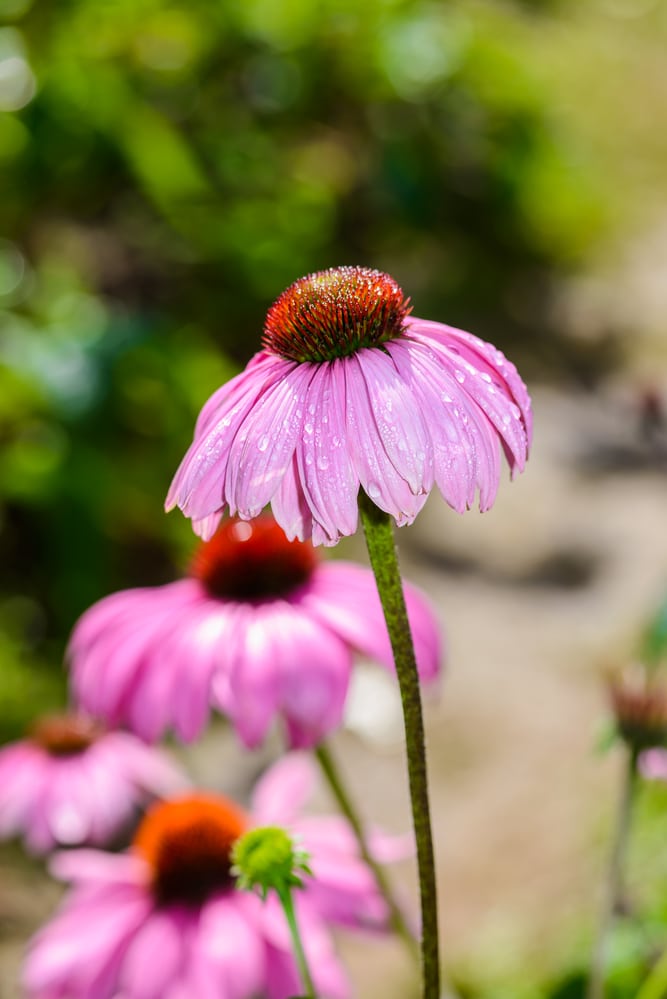
Diseases that Affect Coneflowers
As easy as Coneflowers are to care for, they can still fall prey to a few diseases if you’re not careful. These diseases are, however, easy to prevent.
As stated above, overhead watering is determinantal to this plant. Wet foliage can lead to mold and fungus, so aim to keep the leaves dry by watering the soil only, and never ever overwater.
Always remember that this plant is drought-tolerant, so it doesn’t need to remain moist at all times.
Some of the most common diseases and pests that afflict Coneflowers are grey mold aka Botrytis, Powdery Mildew, and Japanese Bettles.
If you keep a watchful eye on your Coneflowers and ensure that they have plenty of air circulation by not overcrowding them with other plants, then you’ll be giving them a good chance at staying healthy.
I hope this post inspires you to grow your own Echinacea plants! Trust me when I say that a garden full of Purple Coneflowers is a sight to see. They’re a wonderful addition to gardens.
If you enjoy working with perennials, I think you’ll love looking through my post of 18 Low-Maintenance Perennials and 12 Perennials Perfect for Shade Gardens.
Or, if you love a good mix of annuals and perennials, you should definitely read my list of 16 Annuals that Bloom ALL Summer and into Fall. I think a combo of annuals and perennials in a landscape is a winning one!
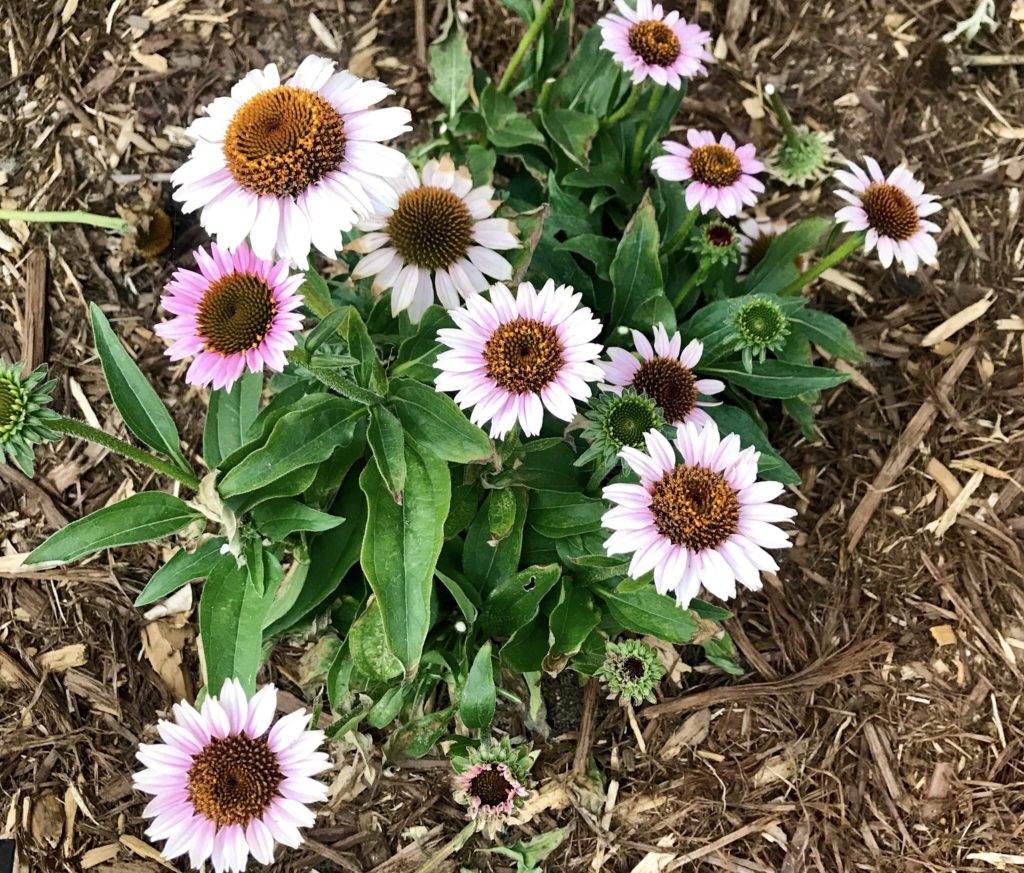
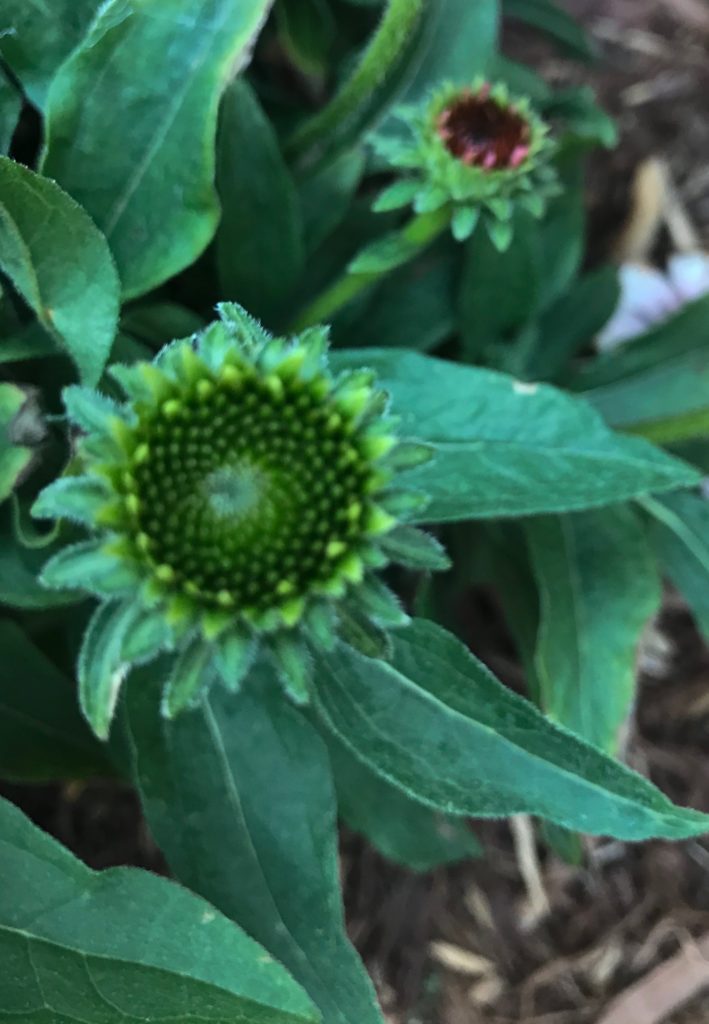
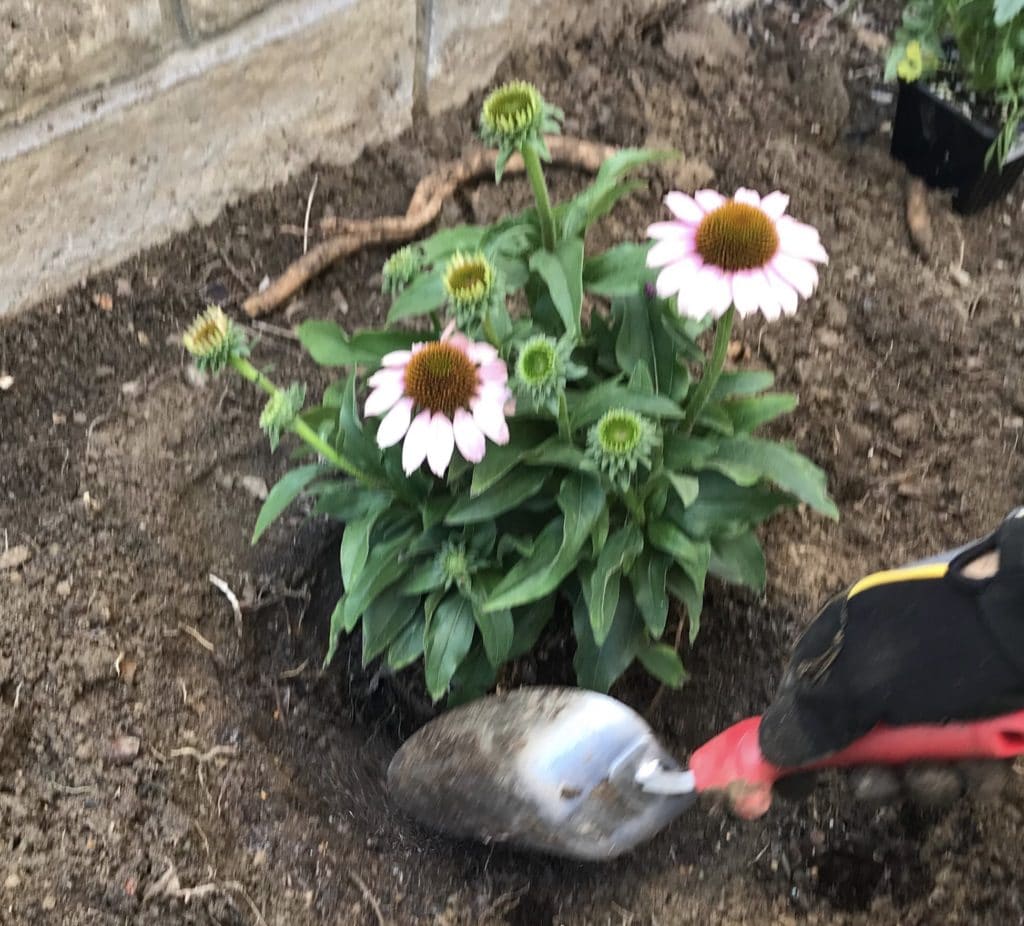
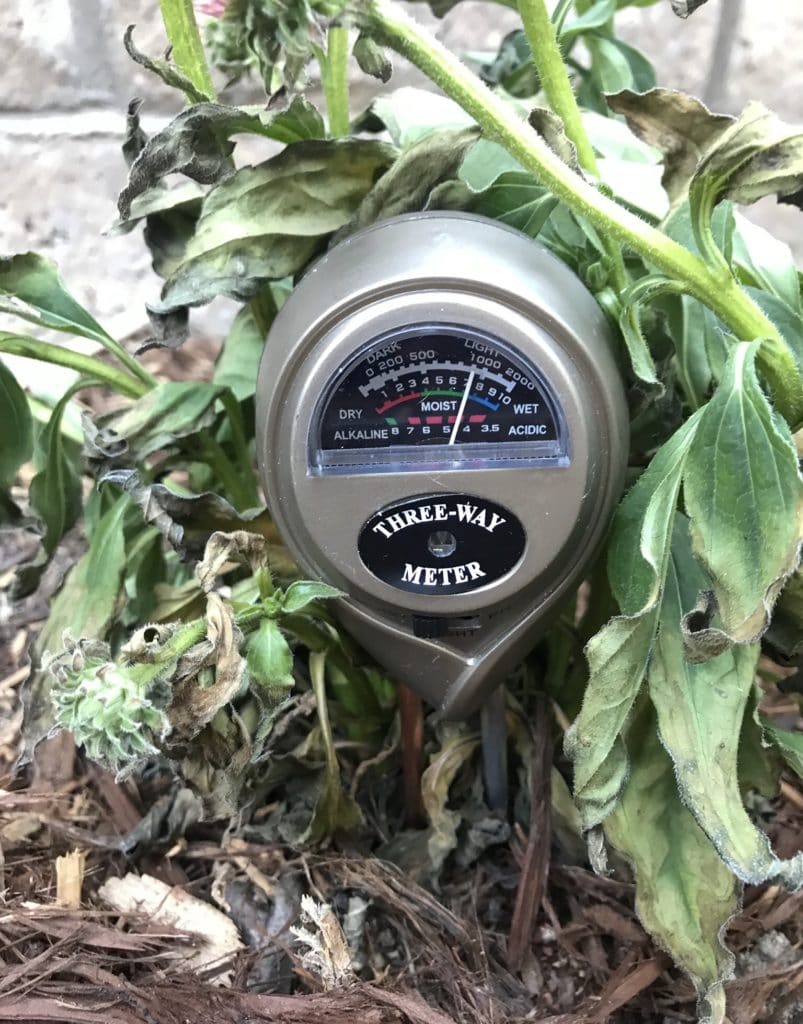
I need cut down plant in winter in Quebec, can I cut corn flowers back to the ground?
Yes, you can!